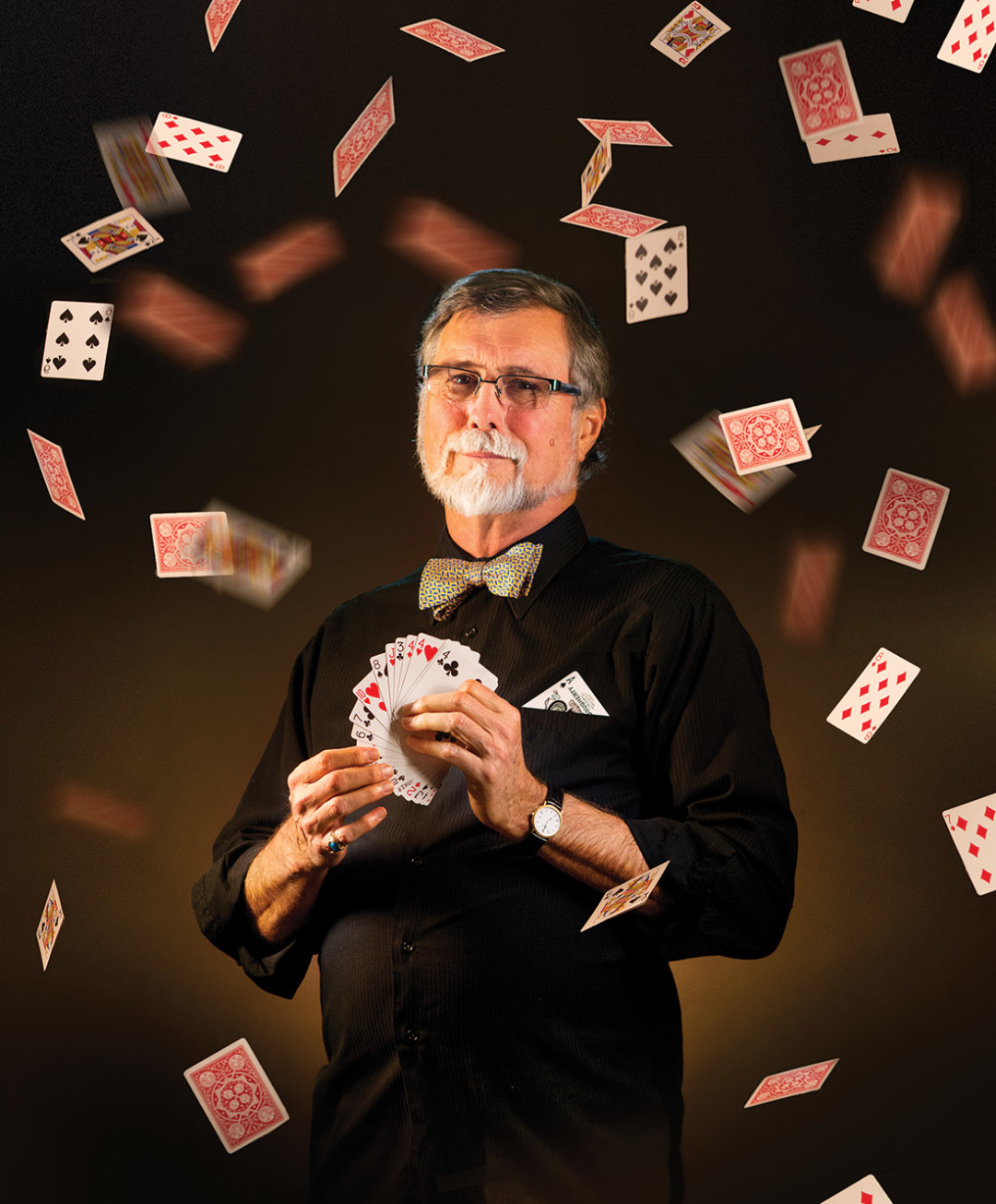Something Up His Sleeve

Image: Karl Wolfgang
Aspen Sojourner: You became interested in magic in 1977 at age 30, when you met Bob Sheets, the wild-eyed bar magician at Snowmass’s Tower Restaurant, and you are still performing in Snowmass thirty-six years later. Why Snowmass?
Doc Eason: The ’70s were a special time for Snowmass, and I just lucked into this circle of friends, including Bob Sheets and John Denver, who was bankrolling the Tower Restaurant. Bob would show me tricks in the afternoon, and that night the Tower was like a laboratory where I got to try new things out. John’s involvement lent some depth to the business, and he was big booster of magic. When Bob left to open the Jolly Jester in Aspen, I stayed. Like so much of Snowmass then, it was serendipitous.
AS: Serendipitous and sustainable—your show has endured for three decades. How do you keep the crowds coming back?
DE: Great magic is a little mystery and a little comedy. In bar magic, the audience is your cast. Every show is different, because the audience is different. Who’s the timid one? Who can you have fun with? I start off small with one person at a time and then build. Gradually, I involve larger and larger chunks of the audience, until everyone is part of the fun. In the end, it’s not about the tricks, it’s about having a good time.
AS: What’s a typical Doc Eason show like?
DE: I start as people are settling in by introducing myself, getting each person’s name and hometown. That gives me information that I use later and possible comedy material. I open up with either cards or coins or objects like nuts and bolts, making those things change places or disappear. I move into the first main trick—a card-and-glass trick that has several detours but a central theme—and over thirty to forty minutes I get more and more of the crowd involved until they are bonded and chanting one person’s name over and over again. The lemon trick is next, an impossible trick enhanced with lots of comedy and audience interaction—and the most amazing ending. For the third main trick, I use the audience details I learned at the beginning. By the end, everyone is applauding as I remember twenty to twenty-five names and tell each person what their individual card is. Interactive fun involving the whole audience: that’s a typical Doc Eason show.
AS: You were a psychology major in college. Do you incorporate any of that education in your act?
DE: Fooling the mind is very important in magic. I use psychology a lot of different ways. One way is the words that I use: psychological verbiage, wonder words—language that we use to deceive people. You can presuppose conditions by using an adverb: I am clearly placing this five in the middle of the deck. In reality, the card mysteriously ends up on the top.
AS: You have won multiple awards for close-up magic, including Close-up Magician of the Year two years in a row from the Magic Castle in Hollywood, where you still perform. What’s the difference between close-up magic and bar magic?
DE: Close-up magic is performed in a small venue before maybe twenty-five or thirty people who sit and watch you do a structured show of different tricks. Bar magic, which is what I do in Snowmass, takes the same tricks and expands them into entertainment. Bar magic is not structured. It’s a bar. You have to make people feel like they are part of the show. That’s the fun of it. I used to think that bar magic was about performing the tricks. Then I thought it was about selling whiskey. Now, after thirty-six years, I get that it’s not about the tricks at all. It’s about making connections and giving people shared memories. That’s what it’s all about!













































